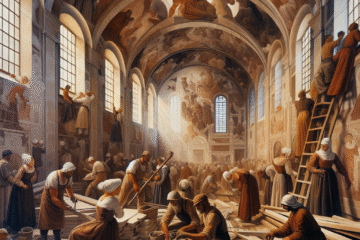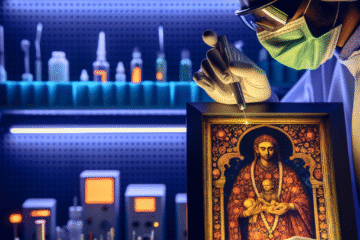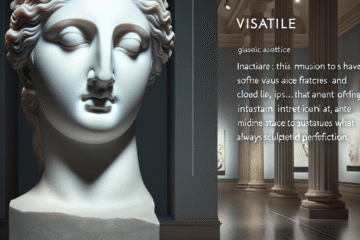Throughout history, portraiture has been a means of capturing the likeness and character of a person. From the ancient Egyptians to the modern day, the way in which portraiture is created and the purpose it serves has evolved greatly. In this blog, we will explore the evolution of portraiture, starting with the Old Masters and ending with the rise of the selfie.
Old Masters
The Old Masters were a group of highly skilled European painters, including Leonardo da Vinci, Michelangelo, and Rembrandt, who worked during the Renaissance and Baroque periods. During this time, portraiture served a very specific purpose: to display the wealth and social status of the sitter. Portraits were often commissioned by the wealthy and were created by skilled artists who used techniques such as oil painting and chiaroscuro (the use of light and shadow) to create highly detailed and realistic depictions.
One example of an Old Master portrait is the “Mona Lisa” by Leonardo da Vinci, which is considered one of the most famous paintings in the world. The Mona Lisa is a portrait of Lisa del Giocondo, the wife of Francesco di Bartolomeo di Zanobi del Giocondo, and is known for its subtle smile and enigmatic expression.
Another example is “The Arnolfini Portrait” by Jan van Eyck, which depicts Giovanni Arnolfini and his wife, Giovanna Cenami, in their home. The portrait is notable for its attention to detail, including the depiction of the couple’s clothing and the room in which they are standing.
19th and 20th Centuries
During the 19th and 20th centuries, portraiture began to shift away from its traditional purpose of displaying wealth and status. With the rise of photography, portraiture became more accessible to the general public and was used to capture personal memories and moments in time.
One example of a 19th-century portrait is “The Scream” by Edvard Munch, which is a highly emotional and expressive self-portrait that captures the artist’s inner turmoil.
In the 20th century, portraiture continued to evolve with the rise of modern art movements such as Expressionism and Surrealism. Artists such as Pablo Picasso and Salvador Dali used portraiture as a means of expressing their own inner thoughts and emotions, rather than simply capturing the likeness of the sitter.
Selfies
In the 21st century, the rise of social media and smartphone technology has led to the emergence of the selfie, a self-portrait photograph that is taken with a smartphone or digital camera. Selfies have become a popular way for people to document their daily lives and share them with others online.
Unlike traditional portraiture, selfies are often taken quickly and without much thought, and are often edited and filtered using smartphone apps. While selfies may not have the same level of skill and attention to detail as traditional portraits, they have become a prevalent part of modern culture and offer a unique glimpse into the lives of individuals.
Conclusion
The evolution of portraiture reflects the changing values and technologies of society. From the Old Masters, who used portraiture to display wealth and status, to the rise of the selfie in the digital age, the purpose and meaning of portraiture has changed significantly over time. However, one thing that has remained constant is the desire to capture and document the human experience through art.


